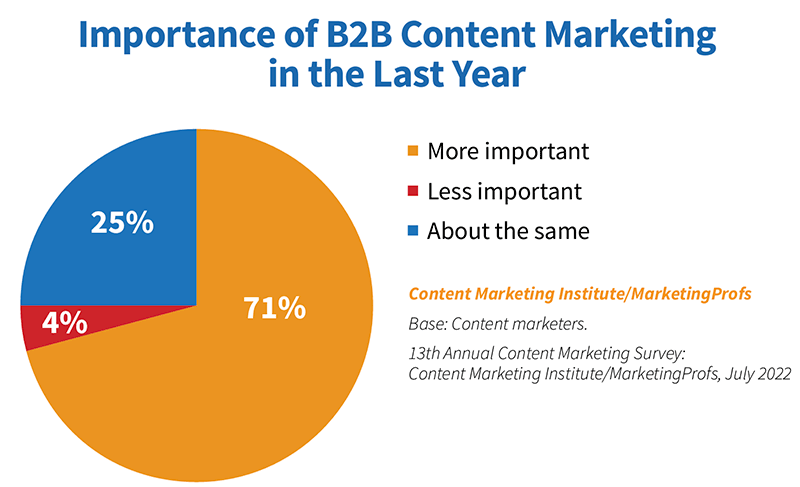With the proliferation of technology and big data in the marketing and advertising realms, consumers have come to expect personalized content. Brands that find ways to deliver personalized experiences reap the benefits by cultivating a growing and loyal customer base.
On the other hand, failure to provide audience members with relevant content has consequences, with 60% of online shoppers indicating a brand would lose their loyalty if it doesn’t offer personalized content.
Customer segmentation is crucial to providing your audience with content that targets their needs and expectations. You need a strategy for apportioning your current and prospective customers effectively.
Done right, your audience benefits from getting the information it seeks while you get more conversions, increased loyalty, and a better return on your content marketing investments. Who doesn’t like a win-win strategy? Let’s have a look at what you need to know about segmentation to get it right.
What Is Customer Segmentation?
Segmenting customers is a strategy both B2B and B2C brands use to classify prospective and current customers based on shared characteristics. Creating groups empowers content creators to target their messaging more effectively so it reaches the right customers at the right time.
Customer segments make it easier to create buyer personas and customer journey maps for each persona. The more you refine your customer categories, the better your ability to personalize content and the happier your customers will be.
What Are the Benefits of Segmenting Customers?
We know creating segments sounds like more work, but really, it makes your job as a content marketer easier. It provides a focus for your team, allowing them to:
- Deeply understand your customer base, including its interest, expectations, and needs
- Develop tailored messaging for buyers at each stage of the journey
- Fine-tune content campaigns
- Gain a competitive edge
- Identify and craft relevant topics
Customer segmentation may also improve results for your company’s sales and customer service departments, as customers have the information they need to choose the right product, know how to use it, and troubleshoot potential issues.
Once you drill down on your segments, creating a content plan becomes much more manageable. Divvy makes implementation more efficient with a dynamic content calendar that allows you to establish filters for each customer segment.
Source: Content Marketing Institute
How Do You Segment Customers?
The simplest segmentation method is to divide your customers according to demographic characteristics, such as age, gender, marital status, education, and income. It’s a useful approach when you sell products or services geared toward groups within one or more of these traits, such as the fashion industry.
While demographics provide a good starting point, effective customer segmentation often dives deeper into other defining characteristics.
Geographics
Often, what appeals to customers in one region won’t interest those in another. Geographic characteristics include more than the town, state, or country a person lives in. It can also refer to climate regions and environments.
For instance, not all customers living in California have the same needs and interests. Those in the north, in areas that receive heavy snowfall each year (such as Lake Tahoe), might not have the same interest in a bike sale in December as those in the southern desert regions.
Behaviors
Another approach to customer segmentation is to divide your customers according to their behaviors. You’ll want to focus on behaviors that relate to your products or services, such as search trends, buying frequency, buying habits, and product use and preferences.
Customer behaviors are different at each stage of the buyer’s journey. When you create a behavior segment, you may want to differentiate behaviors across all stages.
Psychographics
Gathering psychographic data gets to the root of what makes prospective customers tick. It refers to characteristics such as:
- Personality
- Beliefs
- Values
- Interests
- Opinions
- Lifestyle
Whatever you sell, psychographic characteristics often serve as a foundation for customer interactions with your brand and content.
Technographics
Technological skills and preferences are significant factors in customers’ buying journeys. For example, despite the apparent ubiquity of social media, not everyone uses it the same way.
Technographic customer segmentation incorporates customer preferences and skills in the technologies they use. You’ll want to consider factors such as:
- App and device usage
- Social media use
- Buying channel preferences
- Information channel preferences
The impact of technology on customers’ decision-making and buying habits informs and shapes the content you create and how you deliver it.
Needs
Segmenting your customers according to their needs helps you determine how to address their pain points. Consider your audience’s emotional and physical needs and how your products or services can meet them.
Economic Value
Economic value segments generally separate customers into whether they tend to purchase high- or low-value products or services. Value customer segmentation allows you to target content such as sale offers and new product launches.
Firmographics
Firmographics is a categorizing approach for B2B businesses. Firmographic characteristics include business size, market, revenue, and industry. These can help you understand the common features of the companies you do business with.
Are There Tools That Help With Segmentation?
Fortunately, numerous tools exist that can ease your segmentation load. You might benefit from using more than one product, depending on your reasons for dividing your customers into separate categories:
- Segmenting strategy goals: Tools such as Segment help you align strategy goals with customer segments.
- Segmenting for content planning: DivvyHQ’s platform provides effective content management tools to help you plan, schedule, and organize content for each customer segment.
- Segmenting asset delivery: Customer segmentation tools such as Salesforce help you get your content in front of the right customers at the right time.
Much of the software uses artificial intelligence and automation, speeding up the segmentation process and making it more efficient and effective.
What Should You Consider When Creating Customer Segments?
Before you begin segmenting, consider the following:
- What do you want to accomplish with your segmentation?
- How will you collect the data you need to create categories?
- How will you use the segments in the content production process?
- How will you distribute the content to ensure it reaches the right audience?
You’ll also want to measure how effective your segments are. Determine what analytics tools you will use to assess performance.
What Platform Simplifies the Customer Segmentation Process?
DivvyHQ puts all the content production tools you need right at your fingertips. Our content calendar, metadata management tools, automation technologies, analytics, and integrations make customer segmentation easy. Request a demo today to learn how we eliminate content chaos.



